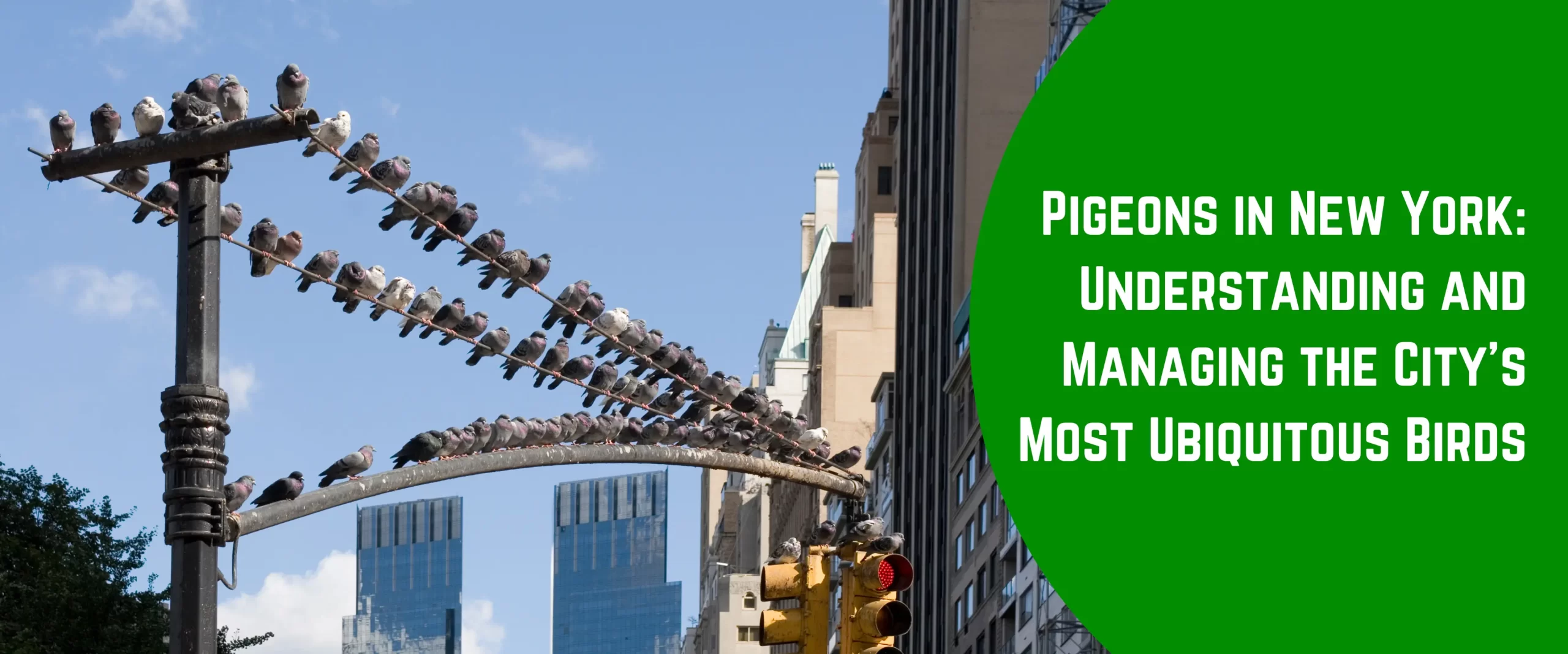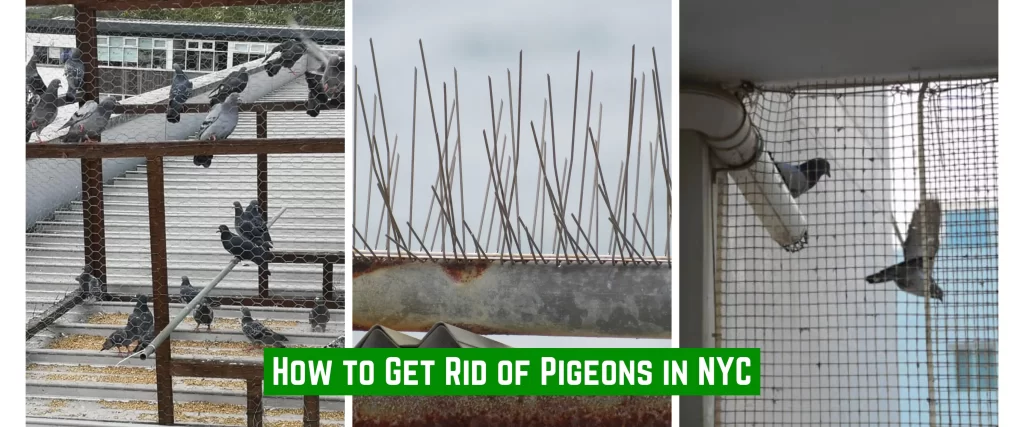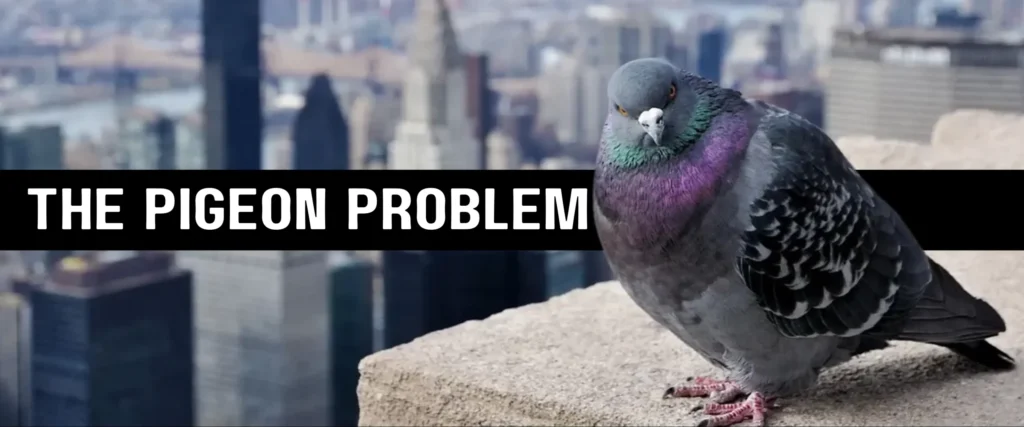
Pigeons in New York: Understanding and Managing the City’s Most Ubiquitous Birds
New York City, the Big Apple, a concrete jungle teeming with life – and pigeons. These plump, grey birds are as ubiquitous as yellow cabs and steaming hot dogs. Whether strutting across sidewalks with an air of entitlement or perched on building ledges surveying the bustling streets below, pigeons are undeniably a part of the NYC experience. But just how many of these feathered residents are there? And what makes the city such a prime spot for pigeons to thrive?
This blog dives deep into the world of pigeons in New York City. We’ll explore:
The Prevalence of Pigeons in New York:
How many pigeons call the city home? We’ll explore estimates, dissect the factors contributing to their population boom, and delve into any recent studies that shed light on their numbers.
How many pigeons are in New York? The Big Apple’s Big Flock
Counting pigeons in a city that never sleeps is no easy feat. Estimates vary widely, with some claiming there’s roughly one pigeon per New Yorker (that would put the population around a staggering 8.5 million!). However, more grounded estimations suggest a population somewhere in the range of half a million.
Factors contributing to the large pigeon population.
So, what has made New York City such a haven for pigeons? Here’s a breakdown of some key factors:
- Abundant Food Sources: From overflowing trash cans to scattered crumbs from street vendors, the city offers a constant smorgasbord for pigeons. Unlike their wild counter parts who rely on foraging for seeds and berries, NYC pigeons have a year-round buffet at their disposal.
- Ideal Nesting Sites: The urban landscape provides an abundance of nooks and crannies perfect for pigeon nests. Ledges, fire escapes, and building parapets all offer prime real estate for raising young.
- Limited Predators: With a scarcity of natural predators in the city, pigeon populations face minimal threats. This allows them to reproduce and thrive with minimal challenges.
Beyond the Boroughs’ Beaks: Pigeons And Other Common Birds NYC

While pigeons reign supreme in terms of sheer numbers, New York City’s skies are far from a one-bird show. A surprising variety of avian neighbors share the urban ecosystem with our feathered friends. Here’s a look at some of the other common birds you might spot soaring through the concrete canyons:
- The Noisy Neighbor: The Blue Jay, a vibrant blue bird with a distinctive crest, is known for its loud calls and bold personality. Unlike pigeons, they’re primarily insectivores, feasting on beetles, acorns, and even small reptiles.
- A Splash of Color: The Northern Cardinal, with its bright red plumage, brings a touch of the tropics to the city. These territorial songbirds are more selective with their food choices, favoring seeds, berries, and insects.
- The Melodious Migrant: The American Robin, a harbinger of spring with its reddish-orange breast, graces the city during the warmer months. Primarily ground foragers, these birds feed on worms, insects, and fruits.
Pigeon vs. Neighbors: A Tale of Two Habits
While pigeons are happy to scavenge for scraps, their fellow avian residents exhibit more diverse feeding strategies. Blue Jays, for instance, are adept at caching food, hiding acorns and seeds to retrieve later. Cardinals are skilled seed-crackers, using their strong beaks to break open tough shells. Robins, on the other hand, are excellent earthworm hunters, probing the ground with their sharp beaks.
Habitat preferences also differ. Pigeons thrive in the built environment, while cardinals favor parks and gardens with dense foliage. Robins can be found in a variety of habitats, from parks to backyards, while blue jays are often spotted in wooded areas within the city.
City Limits and Cooing Rights: The Legalities of Pigeon Control in NYC
Living alongside pigeons can be a mixed bag. While some find them charming, others view them as a nuisance. So, what are the rules regarding pigeon control in the Big Apple?
- Off Limits: First and foremost, is it illegal to kill pigeons in NYC? Yes, it’s illegal to intentionally kill pigeons within New York City limits. This applies to all methods, from shooting to poisoning. The city enforces a ban on harming pigeons due to concerns about cruelty and potential health risks associated with dead birds.
- Humane Measures Only: The focus in NYC is on humane population control methods. This might involve trapping pigeons with special one-way doors and then relocating them to designated areas outside the city. Another approach involves deterring pigeons from nesting on buildings by installing special netting or spikes. All such measures should be taken by professional pest control.
Beyond the Law: Ethical Considerations and Creative Solutions
The legalities surrounding pigeon control raise ethical considerations. Many people believe that pigeons, as living creatures, deserve a humane approach to population management. This has led to the exploration of alternative solutions.
One approach involves modifying human behavior. Efforts to reduce littering and secure trash cans can make the city less attractive to pigeons seeking food scraps. Additionally, educating the public about feeding pigeons can discourage this practice, ultimately limiting their access to easy meals.
When the Wind Gets Chilly: Where do NYC Pigeons Go in the Winter
As the leaves change color and a nip hits the air, New Yorkers bundle up for the coming winter. But what about the city’s feathered residents – the ubiquitous pigeons? Do they pack their tiny beaks and head south for warmer weather?
Surprisingly, pigeons in New York City are not migratory birds. Unlike their Canadian cousins who head south for balmier climates, NYC pigeons are tough cookies who stick around all year. Here’s how they manage to survive the colder months:
- Urban Oasis: The city itself provides a surprisingly warm microclimate compared to surrounding areas. Buildings and streets absorb heat during the day, releasing it slowly at night, offering some protection from the harshest winter chills.
- Feathered Insulation: Pigeons have a thick layer of down feathers that provide excellent insulation, keeping them warm even in freezing temperatures. They also fluff up their feathers to trap additional air for warmth.
- Food on the Move: While food sources might dwindle slightly in winter, pigeons are resourceful scavengers. They adapt their foraging strategies, relying more on dumpsters and areas where people continue to gather outdoors, like food carts and cafes.
- Huddling for Warmth: Pigeons huddle together in groups during particularly cold nights. This communal behavior helps them conserve body heat and provides a sense of security.
How To Get Rid Of Pigeons NYC:
Humane Deterrence Methods for NYC Homes and Businesses

While pigeons are a part of the city’s character, their presence can sometimes be unwelcome, especially around homes and businesses. Fortunately, there are several humane ways to deter pigeons and keep them at bay:
- Exclusion Tactics: Physical barriers like netting or bird spikes strategically placed on ledges and building parapets can effectively prevent pigeons from landing and nesting.
- Shock and Awe (the Gentle Kind): There are humane shock track systems available that deliver a mild, startling sensation to pigeons when they land. This negative experience discourages them from returning.
- The Power of Reflection: Pigeons dislike shiny objects. Hanging strategically placed reflective tape or Mylar balloons can disorient and deter them from landing.
- Keeping it Clean: This might seem obvious, but eliminating food sources is key. Secure trash cans with tight-fitting lids, and avoid leaving out pet food or birdseed. Even small crumbs can attract pigeons.
Feathered Friends or Feathered Foes? The Role of Pigeons in NYC’s Ecosystem
Pigeons are a significant part of New York City’s ecosystem. They play a role in:
- Seed Dispersal: Pigeons consume a variety of seeds, some of which pass undigested through their droppings. This can contribute to the spread of vegetation in unexpected places, like cracks in building walls or rooftops.
- Insect Control: While their diet mainly consists of seeds and scraps, pigeons also consume insects, including some pest species. This can help to keep insect populations in check.
Drawbacks of a Large Pigeon Population:
- Disease Carriers: Pigeons can carry diseases that can be transmitted to humans through contact with their droppings. Proper sanitation and avoiding direct contact are crucial.
- Property Damage: Pigeon droppings are acidic and can damage building materials. They can also be a nuisance for homeowners and business owners.
Conclusion: Cooing Up a Wrap – Our Feathered Friends and the Big Apple
So, there you have it, folks! We’ve taken a deep dive into the world of pigeons in New York City. From exploring their impressive population numbers and surprising winter survival strategies to understanding the legalities of pigeon control and their role in the city’s ecosystem, we’ve hopefully shed some light on these often-overlooked feathered residents.


